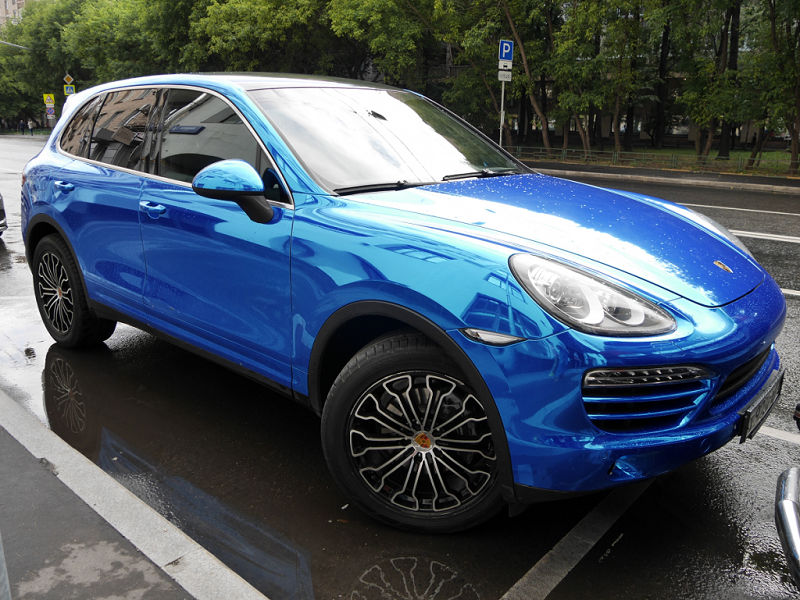Porsche Cayenne: blue metallic
The second-generation E2 Porsche Cayenne went on sale in April–May 2010 as a 2011 model, with an official debut at the 2010 Geneva Motor Show. In preparation for the unveiling, the Cayenne production facility in Leipzig, Germany, closed in December 2009 to commence factory retooling for the new model, a process that took 2–3 months.
The 2011 Porsche Cayenne is larger than its predecessors, but features a more slanted rear window, less upright windshield, a more sloping roofline, door-mounted mirrors, smaller windows at the rear of the vehicle, headlights inspired by the Carrera GT, taillights that extend onto the car’s tailgate, LED daytime running lights and a vastly redesigned interior much like the Panamera.
The 2011 Cayenne is almost 250 kg (551 lb) lighter than the previous models due to removing the low-range transfer case making it slightly more fuel efficient than the previous lineup.
More use of aluminium and magnesium too helped shave weight. Despite its lower stance, the new vehicle’s off-road capabilities have been retained without compromising the street performance-oriented layout and design. In addition to a diesel offering, a hybrid version is available. Model year 2013–2016 diesel Porsche Cayennes are included in the Volkswagen emissions scandal.
The Cayenne comes powered by a 3.6-L VR6 engine producing 300 PS (221 kW; 296 hp), the Cayenne S features the same 4.8-L V8 in the Panamera S models producing 400 PS (294 kW; 395 hp) and the Cayenne Turbo comes with Panamera Turbo’s 4.8 L twin turbo V8 producing 500 PS (368 kW; 493 hp).
The Cayenne S Hybrid uses an Volkswagen-sourced 3.0-L V6 engine producing 333 PS (245 kW; 328 hp), paired with a nickel metal hydride battery capable of 47 PS (35 kW; 46 hp), for a total of 380 PS (279 kW; 375 hp).












